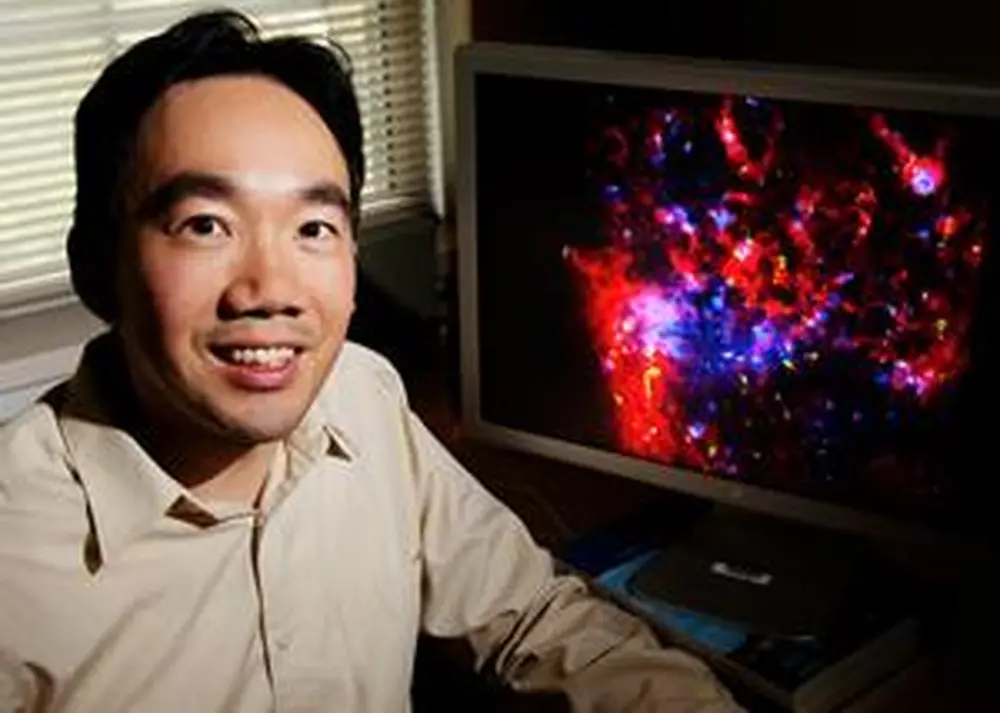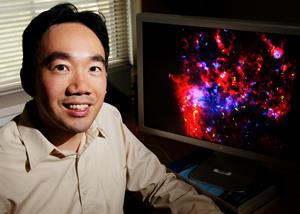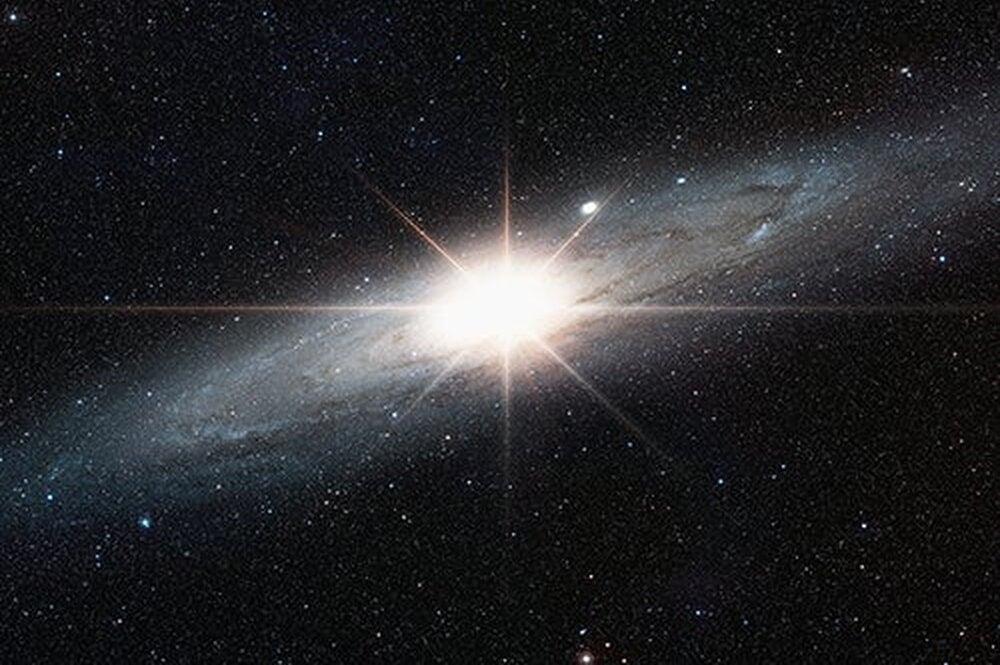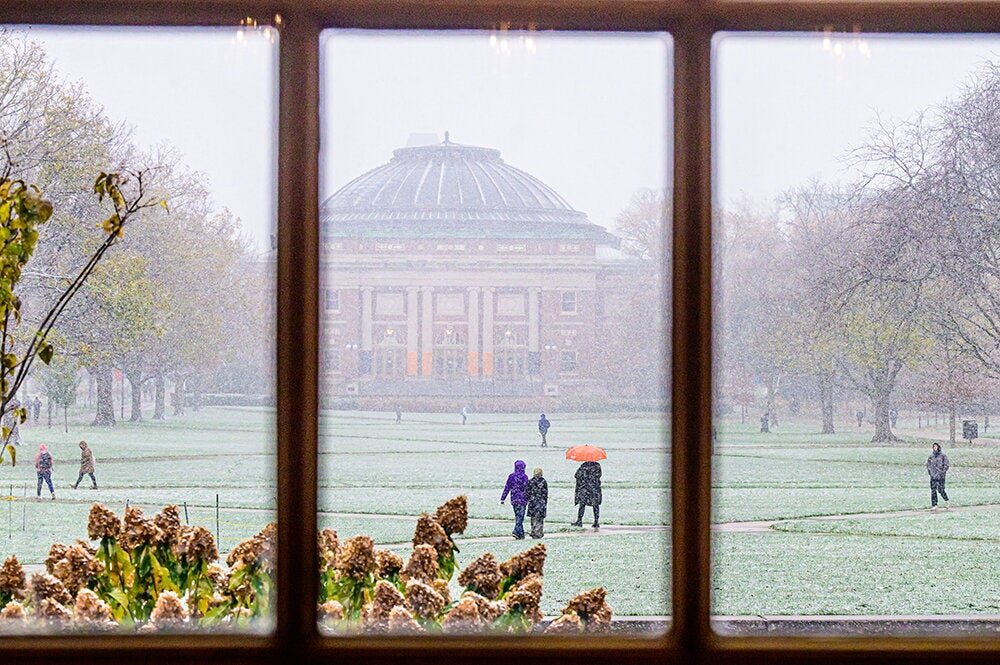

No one ever said that star creation was simple. But astronomers led by a professor at the University of Illinois took a galactic-sized step toward understanding the process when they recently mapped star-birthing regions in an area of space that has long offered clues to the history of the universe.
Using a 22-meter-diameter radio telescope in Australia, an international team of astronomers mapped more than 100 molecular clouds in the Large Magellanic Cloud (LMC), a galaxy approximately 160,000 light years away that offers a spectacular view of the inner workings of a star system that is impossible for astronomers to obtain from our own Milky Way galaxy.
The LMC is named after Portuguese explorer Ferdinand Magellan, whose crew returned to Europe with observations of the galaxy in 1522 after famously circumnavigating the world. It is visible to the naked eye in the southern hemisphere.
“If you imagine a galaxy being a disc, the LMC is tilted almost face-on so we can look down on it, which gives us a very clear view of what’s going on inside,” says University of Illinois astronomy professor Tony Wong, who led the study.
What they found challenged conventional wisdom on star creation. Although astronomers have a working theory of how individual stars form, they know very little about what triggers the process or the environmental conditions that are optimal for star birth. Wong’s team focused on areas called molecular clouds, which are dense patches of gas—primarily molecular hydrogen—where stars are born.
![A color image of the Large Magellanic Cloud galaxy combining maps of neutral atomic hydrogen gas (red), hydrogen ionized by nearby young stars (blue), and new data from Wong's team which roughly trace dense clouds of molecular hydrogen (green). [Composite image produced by T. Wong, using data from the MCELS (C. Smith et al.), ATCA-LMC (S. Kim et al.), and MAGMA (T. Wong et al.) projects]](/sites/default/files/news/storyimages/16953.png)
Conventional wisdom states that most of the molecular gas mass in a galaxy is apportioned to a few large clouds. However, Wong’s team found many more low-mass clouds than they expected—so many, in fact, that a majority of the dense gas may be sprinkled across the galaxy in these small molecular clouds, rather than clumped together in a few large blobs.
“We thought that the big clouds hog most of the mass,” Wong says, “but we found that in this galaxy, it appears that the playing field is more level. The low-mass clouds are quite numerous and they actually contribute a significant amount of the mass. This provides the first evidence that the common wisdom about molecular clouds may not apply here.”
The large numbers of these relatively low-mass clouds means that star-forming conditions in the LMC may be relatively widespread and easy to achieve.
The team also compared their molecular cloud maps to maps of infrared radiation, which reveal where young stars are heating cosmic dust. They examined a sample of newborn stars compiled by research scientist Robert Gruendl and Illinois astronomy professor You-Hua Chu.
“It turns out that there’s actually very nice correspondence between these young massive stars and molecular clouds,” Wong says. “That’s not entirely surprising, but it’s reassuring. We assume that these stars have to form in molecular clouds, and it tells us that the molecular clouds do hang around long enough for us to see them associated with these massive young stars.”
Wong hopes to continue studying the relationship between molecular clouds and star formation in greater detail. He plans to use a newly constructed array of telescopes in Chile to see the cloud environment in higher resolution, pinpointing exactly where inside the molecular cloud star formation will occur.
“This study provides us with our most detailed view of an entire population of clouds in another galaxy,” Wong says. “We can say with great confidence that these clouds are where the stars form, but we are still trying to figure out why they have the properties they do.”


